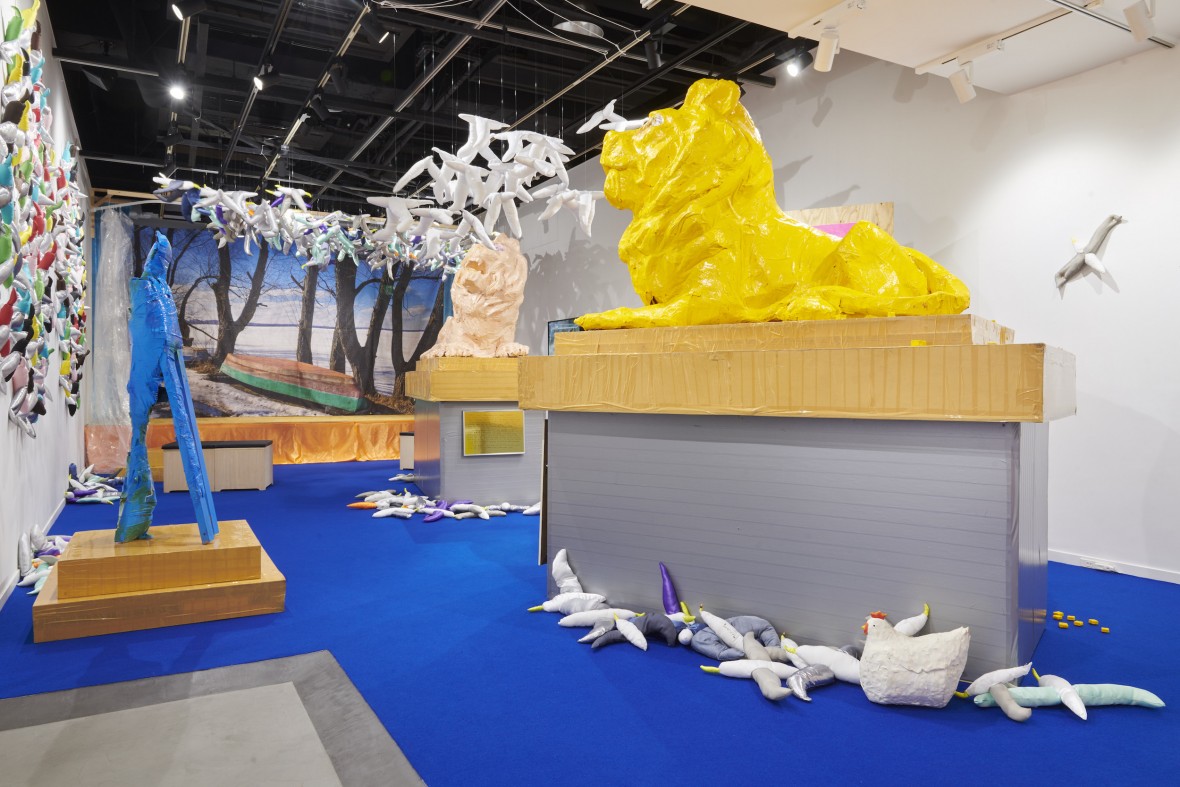
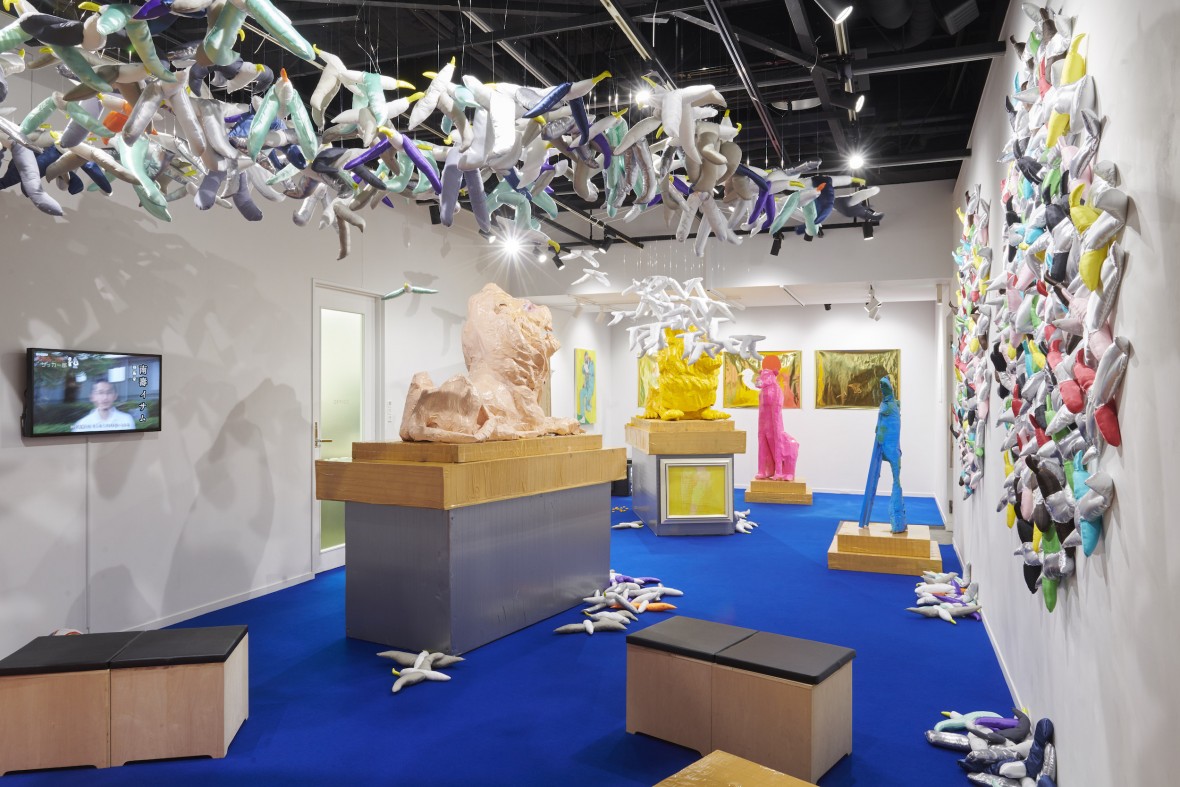
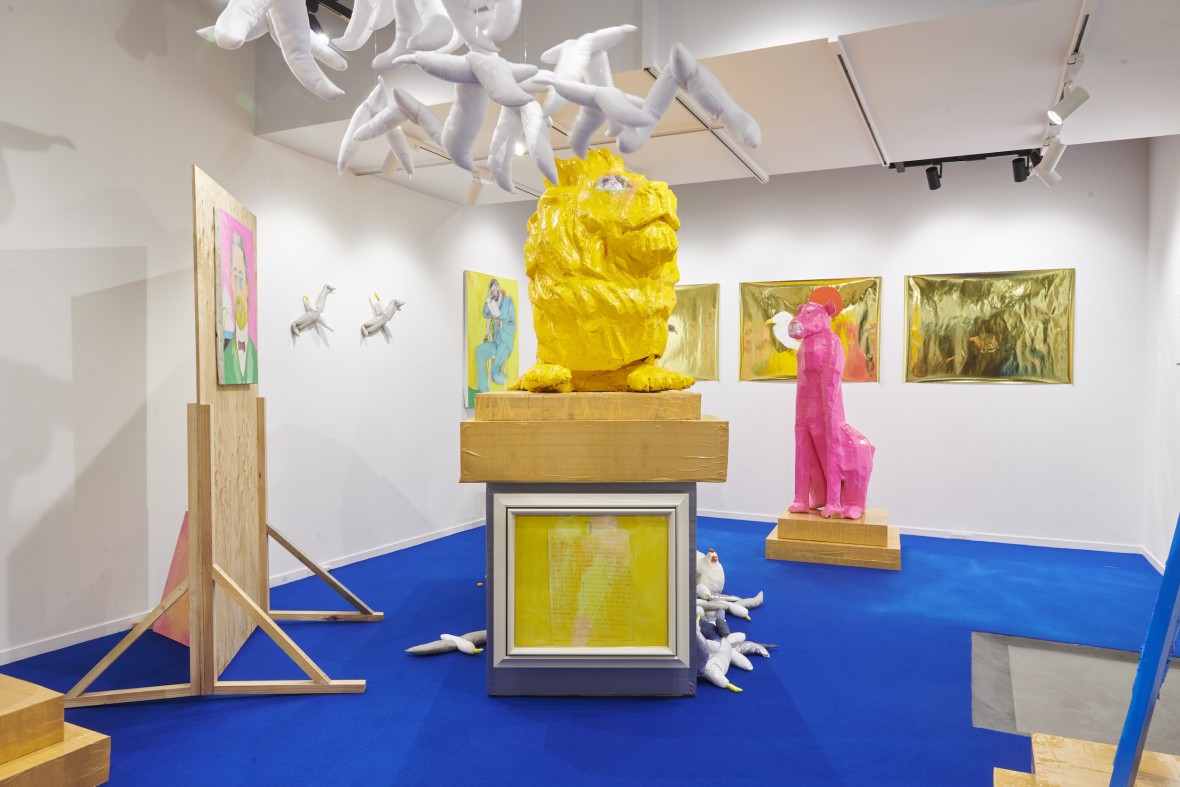
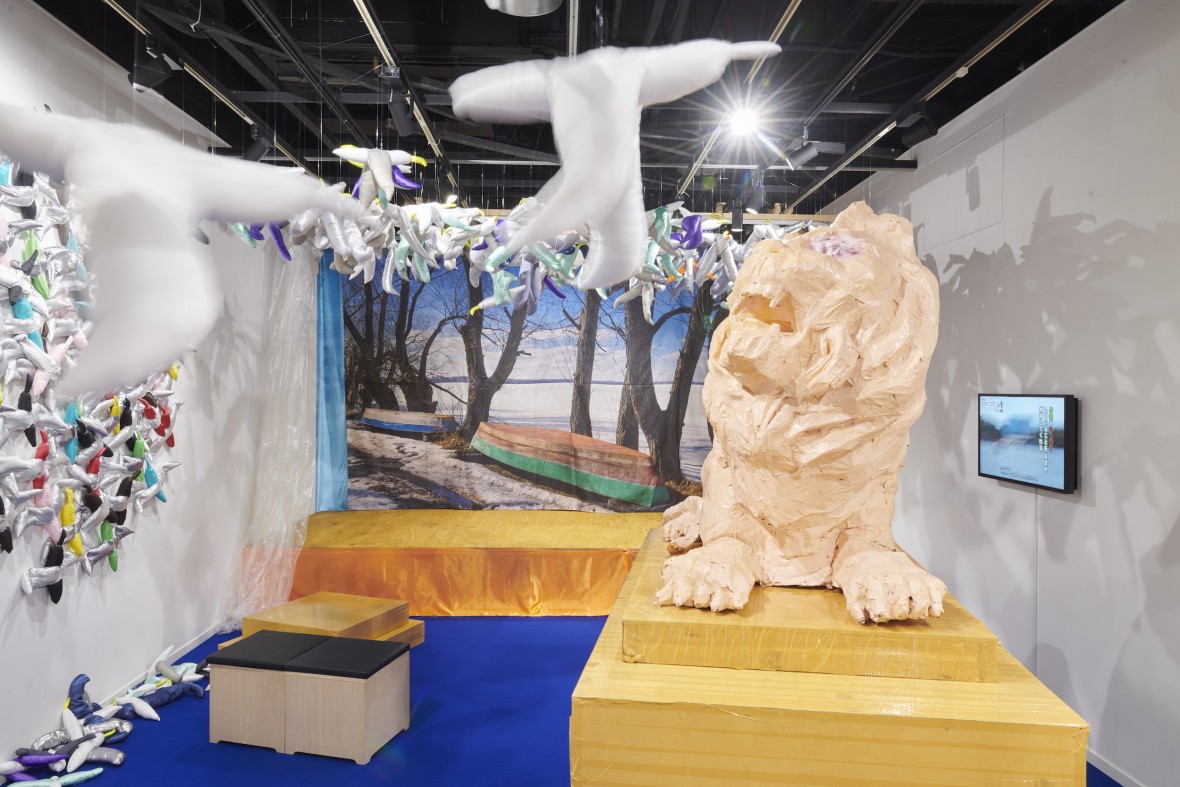
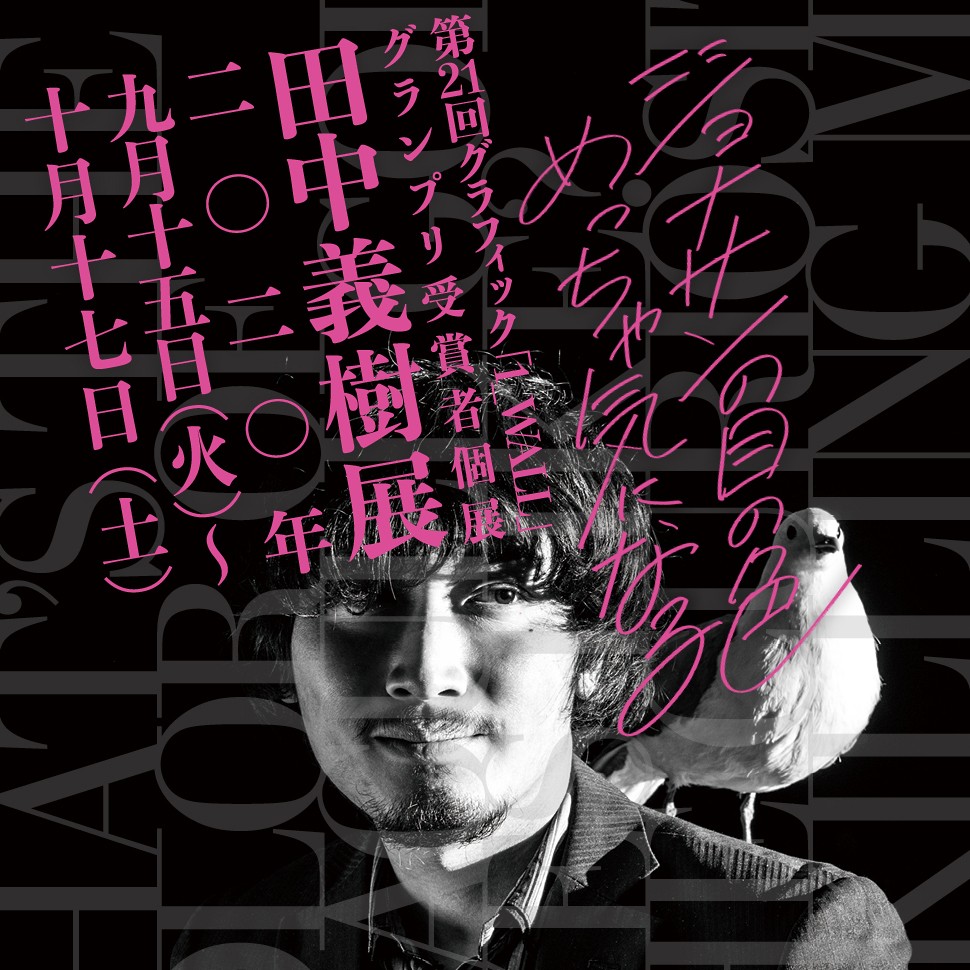
The 21st “1_WALL” Graphics Competition Grand Prize Winner
Yoshiki Tanaka won the Grand Prize in the 21st “1_WALL” Graphics Competition for “feels like sightseeing,” his works on the public demonstrations held in Hong Kong in May 2019. His display consisted of three large drawings of Hong Kong’s paper currency, numerous dog figures, and his diary spanning from his days in residence in Hong Kong up to the exhibition itself. Tanaka’s works received accolades from the judges. One said, “Though Tanaka deals with a difficult theme that’s still very much in progress, he sublimates it to a lighthearted expression – in a good sense.” Another offered, “Tanaka has taken it upon himself to probe deep beneath the surface of a major social issue.”
Tanaka’s artistic activities up to now have taken many different forms. During his university days, when he majored in Sculpture, he started his own theater troupe and performed on stage. Since graduation he has continued to create and show new works, mostly installations, and he has also performed live in comic skits. In all his activities, while dealing with serious social issues Tanaka doesn’t make his messages overbearing. Instead he infuses his works with humor, sampling a variety of images drawn from existing artworks, pop music, films and so on.
Tanaka’s motif for his solo exhibition will be Chekhov’s “The Seagull,” which is the first play he ever saw in a theater. On display will be a host of works he created by linking various images, in the manner of playing a word association game. Visitors are sure to enjoy seeing what Tanaka has been up to since winning his Grand Prize a year ago.
On October 6 (Tue), Tanaka will be joined by art director and graphic designer Yuri Uenishi for a Talk Event. They will discuss the process by which an idea gradually takes shape and becomes a finished work.
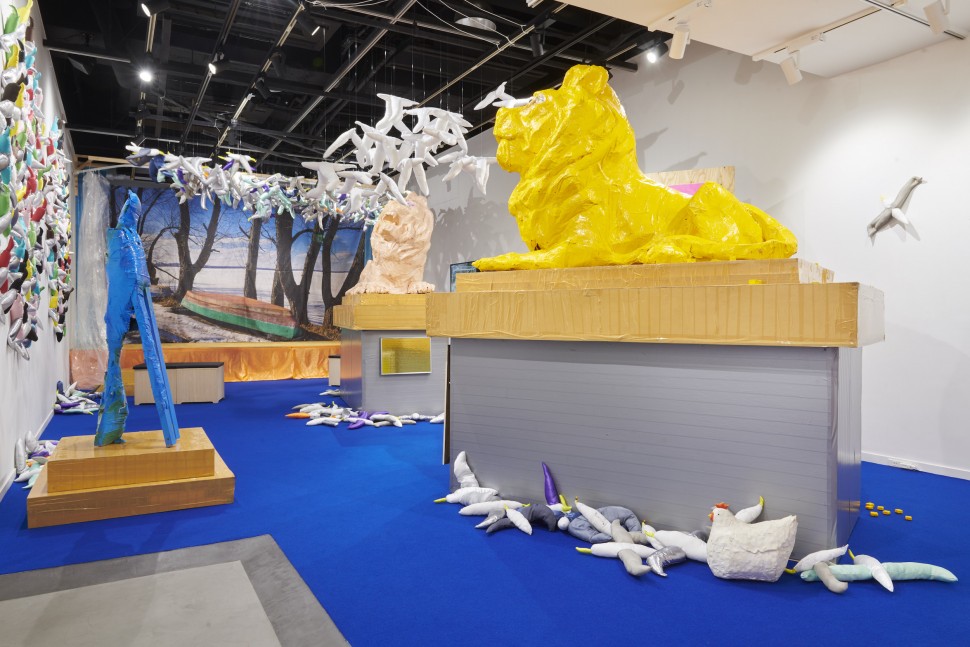
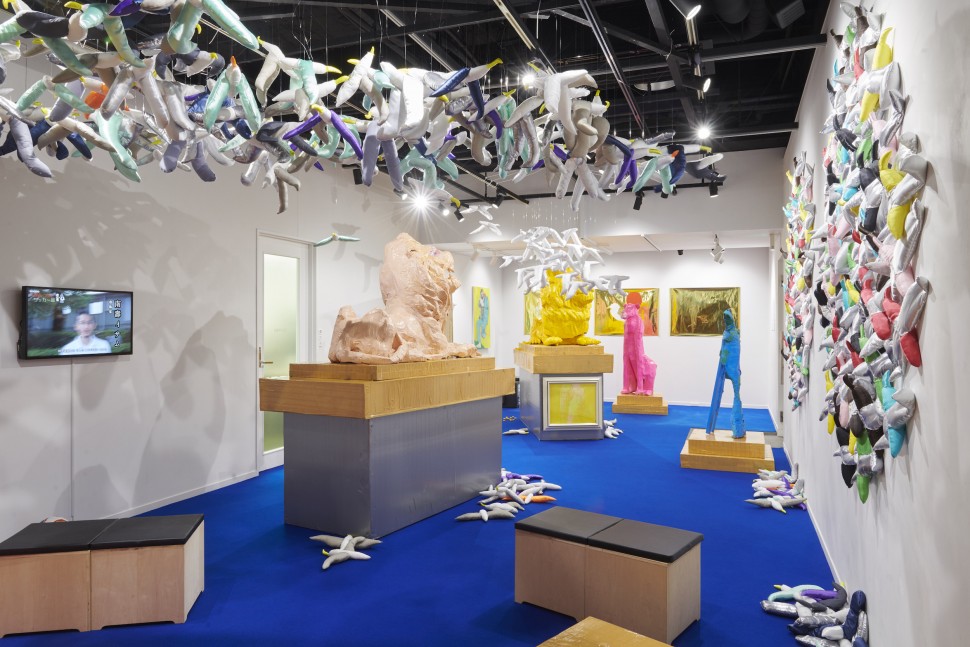
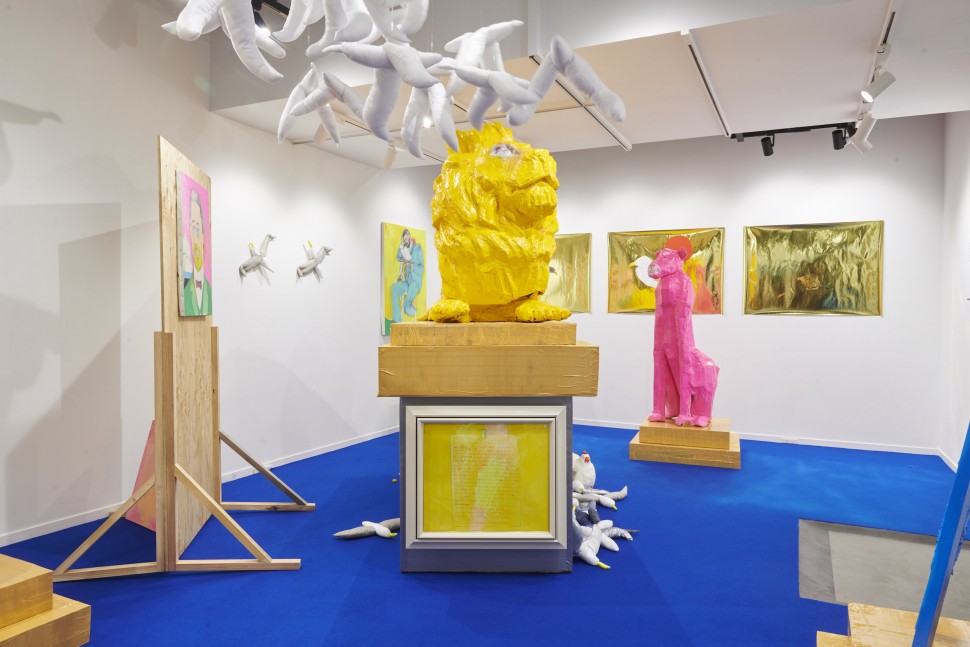
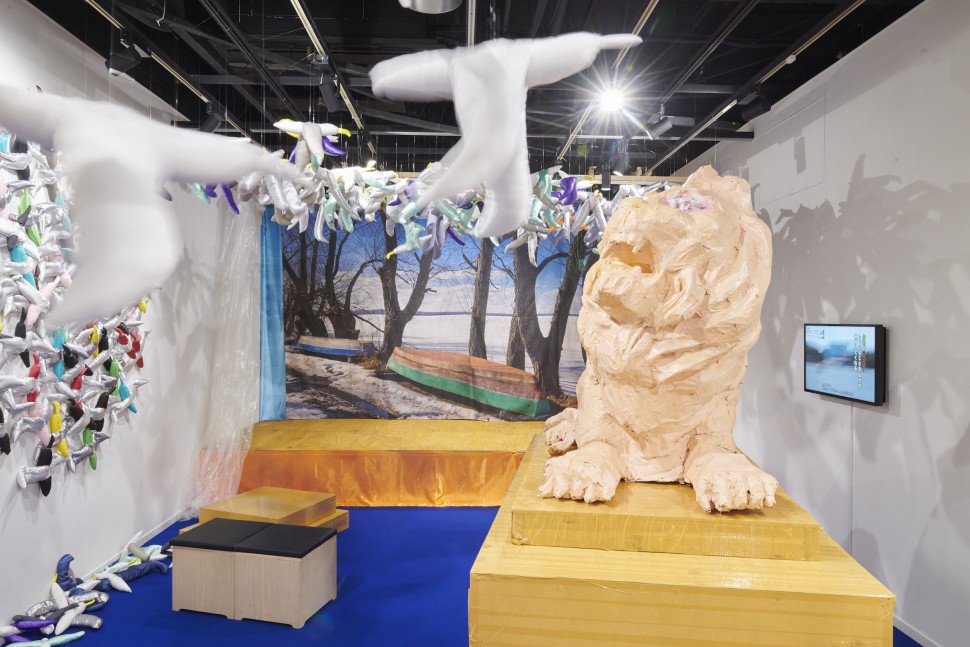
PREV
NEXT




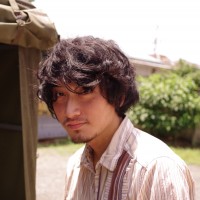
Message from Artist
For this exhibition I’m thinking of making it on a motif of Chekhov’s “The Seagull.” I have a lingering memory of “The Seagull” performed by a theater company when I was a sophomore in high school, in Mie Prefecture. At that time I had never read “The Seagull,” and I thought it was a story really difficult to understand. But this year, that theater troupe, impacted by the coronavirus pandemic, uploaded a number of its past performances to the Internet, among them “The Seagull” which I had seen so long ago. When I discovered it, I watched it, only to find that the play had been reworked with a new interpretation. It was “The Seagull,” yet it wasn’t “The Seagull.” Having actually read Chekhof’s “The Seagull,” I had thought there was something odd, something different between what I recalled of the troupe’s performance and the real text, but at the time I wasn’t able to speak up and say something was strange. The video of the performance was really interesting.
A nuclear plant you thought was safe sometimes explodes. The lifestyle you assumed would continue sometimes changes completely. It’s the same as finding that “The Seagull” you thought you knew wasn’t “The Seagull” after all.
“Silence! Our only choice is to keep living, waiting for the deus ex machina!”
“Wan! Wan!” *the bark of a dog (jeering from the crowd)
Three… Two… One… (faint sound of a shotgun)
March 2020, Yoshiki Tanaka, same age as Treplev
Message from One of the Judges
Yoshiki Tanaka is an artist who frequently engages in self-introspection. By this I of course don’t mean that he is apologizing for mistakes he has often made. What I mean is that he takes it upon himself to look deep within himself, probing his innermost thoughts. It’s precisely because he has this self-introspective ability, extremely important in the realm of art (or aesthetics), that he was able to take the undefinable gloomy feelings he felt toward the large-scale demonstrations that took place immediately after returning from his residency in Hong Kong and turn them into his installation titled (and themed) “feels like sightseeing.” Tanaka is also an artist who often feels anger. And he also knows that when it’s desired to share those feelings of anger, it’s necessary to change them to laughter. This stance of his, to change anger into laughter, surely originated from his much-loved music unit Karate Bakabon.
With high hopes I’ll be keeping a close eye on Tanaka, who says he sympathizes with the weak rather than the punk, to see how far his destructive powers can go in today’s Japan.
Kenjiro Hosaka (Curator, National Museum of Modern Art, Tokyo)